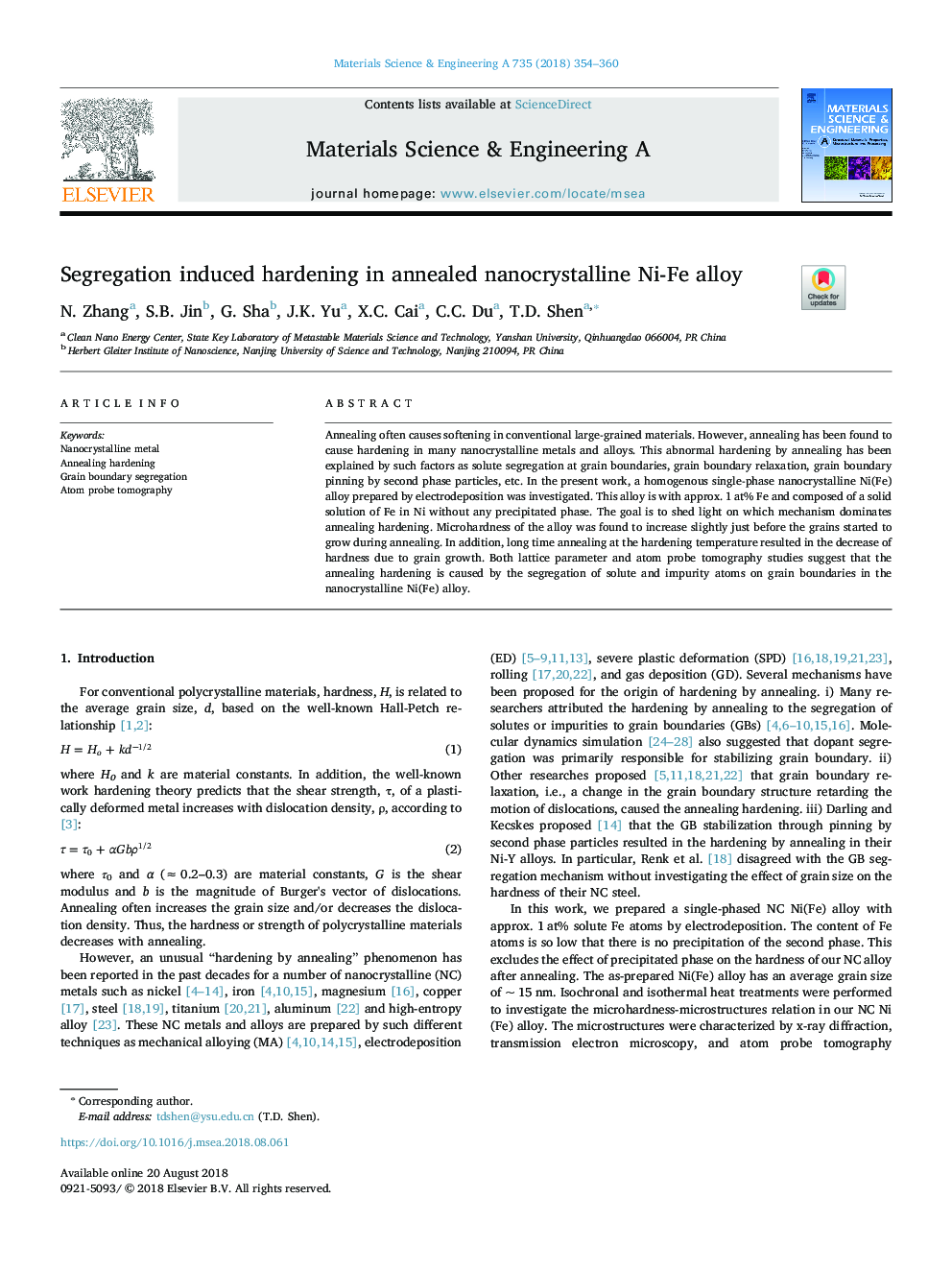| Article ID | Journal | Published Year | Pages | File Type |
|---|---|---|---|---|
| 11007023 | Materials Science and Engineering: A | 2018 | 7 Pages |
Abstract
Annealing often causes softening in conventional large-grained materials. However, annealing has been found to cause hardening in many nanocrystalline metals and alloys. This abnormal hardening by annealing has been explained by such factors as solute segregation at grain boundaries, grain boundary relaxation, grain boundary pinning by second phase particles, etc. In the present work, a homogenous single-phase nanocrystalline Ni(Fe) alloy prepared by electrodeposition was investigated. This alloy is with approx. 1â¯at% Fe and composed of a solid solution of Fe in Ni without any precipitated phase. The goal is to shed light on which mechanism dominates annealing hardening. Microhardness of the alloy was found to increase slightly just before the grains started to grow during annealing. In addition, long time annealing at the hardening temperature resulted in the decrease of hardness due to grain growth. Both lattice parameter and atom probe tomography studies suggest that the annealing hardening is caused by the segregation of solute and impurity atoms on grain boundaries in the nanocrystalline Ni(Fe) alloy.
Related Topics
Physical Sciences and Engineering
Materials Science
Materials Science (General)
Authors
N. Zhang, S.B. Jin, G. Sha, J.K. Yu, X.C. Cai, C.C. Du, T.D. Shen,
